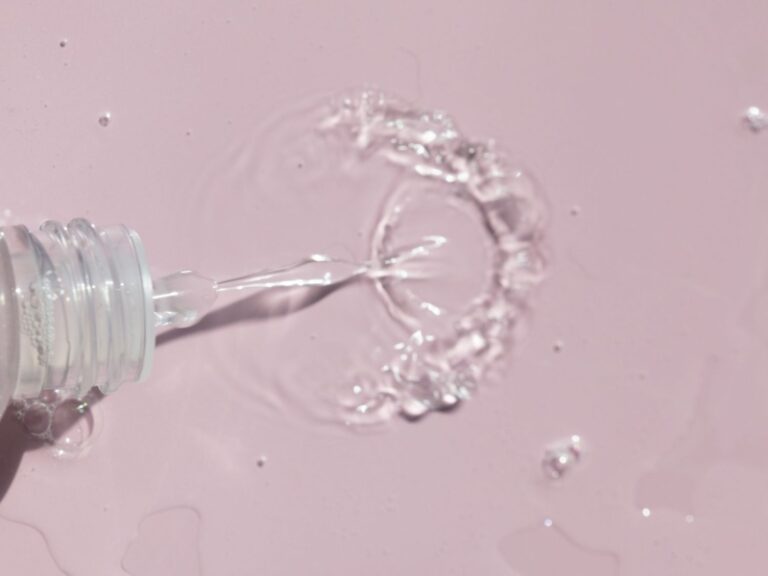
Side Effects How to Use The Final Takeaway
If you remember the 1990s, chances are you’re familiar with astringents. After all, Sea Breeze’s Astringents and Clinique’s Clarifying Lotions were all the rage, promising squeaky clean skin in just a few swipes. The alcohol-based, ultra-potent formulas were practically a teenage prerequisite, ostensibly keeping breakouts at bay.
Even now, some devotees swear by astringents, particularly for tightening pores and sopping up excess oil. And today’s formulas are smarter than yesteryear’s, harnessing the power of skincare advancements and taking the rising interest in skin barrier protection into consideration. Read on for everything you need to know about these modern-day astringents, including who should use them and how they differ from traditional toners, straight from board-certified dermatologist Ranella Hirsch, MD, and doctor of nursing practice Jodi LoGerfo, DNP.
What Are Astringents?
Astringents are used immediately after cleansing to tone the skin and shrink the appearance of enlarged pores, explains LoGerfo. They are typically water-based and intended to remove any excess dirt, makeup, oil, and grime leftover post-cleansing.
According to Hirsch, because astringents are meant to draw out oil, they typically leave the skin feeling tight—after all, the word “astringent” refers to something that causes the contraction of skin cells and body tissues. Given the intended results, it’s no surprise that alcohol, salicylic acid, and witch hazel are all common astringent ingredients.
Both experts agree astringents benefit those with oily or acne-prone skin the most. Those with sensitive or dry skin may find astringents too aggressive.
Astringents vs. Toners
Colloquially, “astringent” and “toner” tend to be used interchangeably. In reality, they’re slightly different. Astringents fall under the category of toners; in other words, all astringents are toners, but not all toners are astringents.
Whereas astringents are specifically meant to cleanse and tighten the pores, toners can have a range of benefits. To be clear, those benefits may include cleansing and tightening the pores, but they’re not limited to those—some hydrate, others exfoliate, and so on.
Given their wide-reaching benefits, toners are more universal than astringents—anyone can benefit from a toner. It just comes down to finding the right formula.
What Are the Benefits of Astringents?
As we mentioned before, astringents have a few key benefits. Here's a recap:
- Cleanse the skin: Per LoGerfo, astringents help remove any excess dirt, makeup, residue, and grime left on the skin post-cleansing.
- Remove excess oil: Astringents draw out excess oils and remove them from the skin, Hirsch tells us.
- Decrease inflammation: By tightening and constricting the skin, astringents help decrease inflammation. This is particularly helpful for those with acne-prone skin who might be dealing with actively inflamed spots.
- Constrict and shrink the appearance of pores: As previously stated, astringents cause skin cells and body tissues to contract. When applied topically, this causes the pores to constrict and appear smaller, LoGerfo explains.
- Reduce breakouts: Because excess oil and grime can contribute to acne flare-ups, LoGerfo says astringents can ultimately reduce the likelihood of breakouts.
Potential Side Effects of Astringents
According to LoGerfo, astringents may burn or sting upon application, leading to redness and increased sensitivity. Astringents are meant to sop up oil, but depending on how strong the product is and the oil levels in the skin, this can ultimately strip the skin, leaving it inflamed and even causing potential peeling. Hirsch tells us they can also cause severe dryness and irritation, especially if they contain alcohol.
In general, alcohol-based astringents are particularly risky. But even non-alcohol-based ones can wreak potential havoc on the skin. For those with acne, strong astringents may even further irritate breakouts, particularly if the skin is dry. This can lead to peeling, additional redness, and inflammation, LoGerfo warns.
Don’t get us wrong: Astringents aren’t all bad—they’re simply not intended for certain skin types and concerns. If you have active skin infections, psoriasis, eczema, or any other skin condition that causes broken, irritated skin, both doctors suggest avoiding astringents. Those with sensitive or excessively dry skin should also proceed with caution.
How to Use Astringents
Astringents are typically applied after cleansing, sprayed directly onto the face, or swept over the skin on a saturated cotton pad, explains LoGerfo.
Because astringents can be so drying, the safest way to incorporate one into your routine is every other day. From there, you can pull back or ramp up frequency as needed. If misted or sprayed onto the face, wait about a minute post-application to allow the product to really sink into the skin and dry down. To avoid irritation, always follow up with a moisturizer (and SPF in the morning) to soothe and protect.
The Final Takeaway
Skincare isn't a one-size-fits-all approach; what works for one person may not work for another. In that vein, astringents aren't for everyone. But if you're dealing with excessive oil or have acne-prone skin, you may want to consider adding one to your routine. Just be sure to start slow and pay attention to your skin's cues.

